A feeder, often referred to as a feeding machine, is a mechanical device used to uniformly, continuously, or quantitatively convey materials from a storage bin or other storage equipment to subsequent processing equipment. Its main function is to feed processed or unprocessed materials from one equipment to a receiving equipment or transportation machinery in a continuous and even manner. In industrial applications, feeders are mainly divided into three core types: Apron Feeder, Vibrating Feeder, and Belt Feeder, each designed for different material characteristics and working conditions.
I.
Apron Feeder
Structure and Principle
An Apron Feeder consists of core components such as a main shaft unit, feeding pan, drive unit, frame, support rollers, return rollers, and tail wheel tensioning device.
The working principle of an Apron Feeder involves material conveyance through chain-driven plate traction. The motor drives a speed reducer to reduce rotation speed and increase torque, causing the main sprocket to rotate and pull a closed chain and the plates fixed to it to operate cyclically. The plates form a continuous carrying surface that receives materials falling from the inlet, conveying them along a horizontal or inclined frame to the discharge end, where materials are unloaded by gravity or baffles.
Core Characteristics
1. Superior Load-Bearing Capacity
The Apron Feeder’s robust steel support frame is equipped with buffer rails to limit pan deflection, eliminating permanent bending. It can withstand various load conditions during startup and operation. The plate structure is sturdy, capable of withstanding the impact and wear of large particles (≥1000mm) and heavy materials (such as ore, rock, and scrap steel), with a single conveying capacity of up to hundreds of tons per hour.
2. Adaptability to Extreme Working Conditions
o High-temperature resistance: Can convey materials above 600°C, such as sintered ore and coke.
o Wear resistance: The plate surface can be overlaid with wear-resistant layers or made of high-manganese steel, suitable for conveying highly abrasive materials like quartz sand and iron ore.
3. Anti-Adhesion
In scenarios involving sticky and wet materials (such as clay and wet coal), compared to traditional Vibrating Feeders prone to blockages due to amplitude decay, the Apron Feeder features vertical or negative-angle walls. This unique design effectively prevents material adhesion and stagnation on internal walls, avoiding conveying delays and blockages caused by material accumulation.
4. Long-Distance and High-Inclination Conveyance
It can convey materials horizontally over tens of meters and has a maximum conveying inclination of 25°, saving space and suitable for mines with limited terrain.
5. Customization Flexibility
The Apron Feeder can be equipped with a frequency converter to adjust the main motor’s speed and thus the chain speed, controlling the feeder’s throughput. It can also adjust the plate width according to the crusher’s inlet size and configure gates to control the discharge flow.
II. Vibrating Feeder
Structure and Principle
The core components of a Vibrating Feeder include a vibration motor, feed chute, spring supports, and control box.
The feeding principle of a Vibrating Feeder is realized by using a specially designed vibration motor to drive the chute to perform periodic linear reciprocating vibrations in an inclined direction. When the vertical component of the acceleration of the feeding chute’s vibration exceeds the acceleration due to gravity, the materials in the chute are thrown up and follow a parabolic trajectory for jump-like forward movement. Due to the continuous vibration of the vibration motor, the feeding chute keeps moving, and the materials in the chute continuously move forward to achieve feeding. It can also be connected to a computer for automated and intelligent feeding.
Core Characteristics
1. Precise Quantitative Control
The motor achieves self-synchronization, operating smoothly with rapid startup and balanced shutdown. By adjusting the vibration motor’s speed, amplitude, or installation angle, the feeding volume can be quickly adjusted, making it suitable for precise metering in automated production lines. Design flexibility ensures seamless integration with existing production processes.
2. Low Energy Consumption and Maintenance
The Vibrating Feeder has no complex transmission components, with no rotational friction during operation, consuming 30% less energy than belt-type feeders. As materials jump forward along a parabolic path, wear on the feeding chute is minimal. With few vulnerable parts (mainly springs and vibration motor bearings), it reduces maintenance and parts replacement costs, suitable for continuous operation scenarios to lower production costs and improve quality and output.
3. Wide Material Adaptability
It can be made into a sealed, rectangular closed structure, suitable for feeding materials with high dust content. It can also be tubular, suitable for fragile granular materials.
4. Compact and Flexible Structure
The Vibrating Feeder is small, lightweight, simple in structure, and easy to install. It can be directly mounted at the bottom of a storage bin or suspended on a frame, saving space.
III. Belt Feeder
Structure and Principle
A Belt Feeder mainly consists of components such as a belt, rollers, and idlers. It achieves continuous conveying and quantitative feeding by using a motor to drive the main roller, which in turn drives the belt to circulate via friction, with idlers supporting the belt to carry materials.
Core Characteristics
1. Large Throughput and Long-Distance Adaptability
o Wide flow range: The belt width is typically 0.5–2 meters, with a maximum exceeding 3 meters. Combined with high belt speeds (up to 2.5m/s), the hourly throughput can reach 50–5000 tons, especially suitable for large-scale material transportation in mines and ports.
o Long-distance conveying: The horizontal conveying distance can reach hundreds of meters without multi-stage equipment relay, reducing material transfer losses.
2. Smooth and Low-Impact, Protecting Material Shape
o Gentle operation: The belt runs at a constant speed, with minimal relative displacement between materials and the belt, resulting in low damage rates for fragile materials or those requiring shape preservation.
o Low noise pollution: Without rigid component impacts, the operating noise is usually ≤75dB, better than Apron Feeders (above 90dB) and Vibrating Feeders (85dB), suitable for food processing, pharmaceuticals, and other noise-sensitive environments.
3. Simple Structure and Low Maintenance Cost
o Few core components: Mainly composed of a belt, rollers, and idlers, with no complex transmission chains or vibration mechanisms. Daily maintenance only requires regular checks of belt tension and idler rotation flexibility, with maintenance man-hours reduced by over 50% compared to Apron Feeders.
o Convenient replacement of vulnerable parts: Worn belts can be vulcanized and repaired on-site or replaced as a whole. Idlers use standardized designs (with a lifespan of about 2–5 years), resulting in low replacement costs.
IV. In-Depth Comparison of Application Scenarios for Apron, Vibrating, and Belt Feeders
Core Scenarios for
Apron Feeder: Feeding at the Front End of Primary Crushing
• Feeding at the front end of metal ore primary crushing: In iron ore, copper ore, and other metal mines, it directly receives oversized raw ore from blasting (particle size ≤1.5m³). With the impact resistance of high-manganese steel plates and forced traction, it evenly feeds materials into jaw or gyratory crushers, solving the problem of material jamming in traditional equipment due to impact.
• High-temperature clinker conveying in cement production lines: For 600°C high-temperature clinker discharged from cement kilns, heat-resistant plates and water-cooled bearing systems ensure continuous and stable feeding, avoiding downtime and maintenance caused by high-temperature deformation in traditional equipment.
• Handling sticky and wet materials: In scenarios such as wet coal sludge and clay mines, compared to traditional Vibrating Feeders prone to blockages due to amplitude decay, the Apron Feeder’s vertical or negative-angle walls prevent material adhesion through a unique angle design, avoiding conveying blockages caused by material accumulation.
Core Scenarios for Vibrating Feeder: Precise Adjustment Feeding in Processes
• Pre-feeding in coal screening systems: Before classification screens in coal preparation plants, adjusting the vibration motor’s frequency and amplitude precisely controls the material flow into the screen, avoiding reduced screening efficiency due to uneven feeding.
• Integration with mobile crushing stations: With a lightweight design and plug-and-play features, it can be embedded in mobile crushing stations to achieve integrated "on-board feeding-crushing-screening" operations, suitable for mine emergency response and temporary mining scenarios.
Core Scenarios for Belt Feeder: Silent Conveying at the End
• Concentrate conveying in mineral processing plants: At the end of copper and gold mineral processing flows, oil-resistant rubber belts gently convey concentrate powders (particle size ≤0.1mm), avoiding metal loss caused by vibration or plate impacts.
• Tailings dry discharge systems: In tailings dewatering workshops, horizontal or slightly inclined belts convey tailings sand with a moisture content of 15%–20%. Combined with skirt baffles to prevent material sliding, the single-machine conveying distance can reach up to 300 meters, with operating noise ≤75dB, meeting environmental mine requirements.
Mine Working Condition Matching Recommendations
• Hard rock primary crushing scenarios: Prioritize Apron Feeders to handle the impact of large, high-hardness materials. For example, in open-pit iron ore primary crushing sections, the "Apron Feeder + Jaw Crusher" combination can achieve a throughput of over 1500 tons per hour.
• Secondary crushing and screening adjustment scenarios: Vibrating Feeders are suitable for links requiring flexible adjustment of feeding volume, such as mobile crushing stations in underground mines, where frequency conversion control can real-time match crusher loads to avoid overload shutdowns.
• Concentrate and tailings conveying scenarios: Belt Feeders, with their low wear and low noise advantages, are suitable for conveying fine materials at the end, such as transporting gold concentrate from flotation workshops to thickeners or dry discharging tailings to storage yards, ensuring process continuity and environmental protection.
Conclusion: These three types of equipment play roles in different stages of mine feeding—
Apron Feeders tackle the front end of primary crushing, Vibrating Feeders regulate the process hub, and Belt Feeders conclude the end conveying. Enterprises can accurately select equipment based on material hardness, processing scale, and environmental requirements to maximize system efficiency.


.jpg)
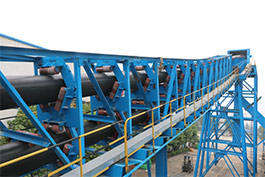
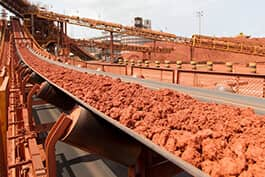
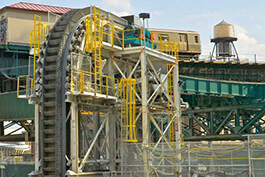
.jpg)
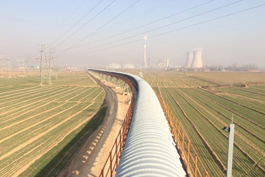
.jpg)
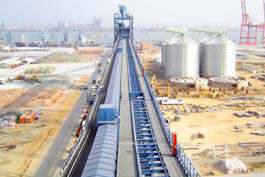
.jpg)


